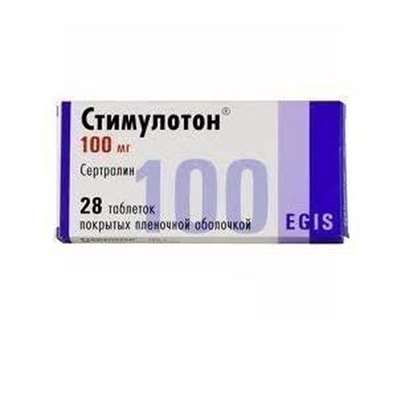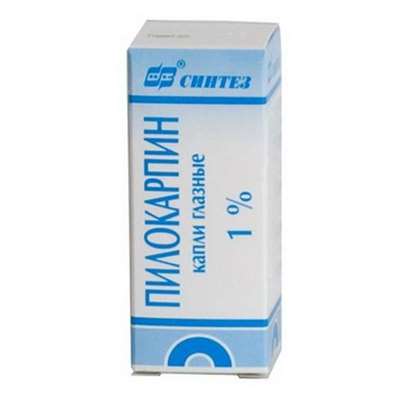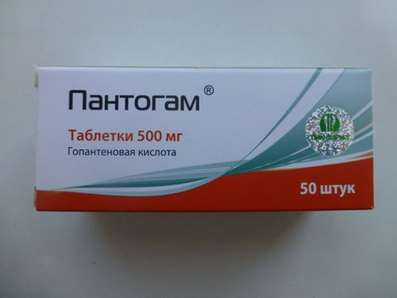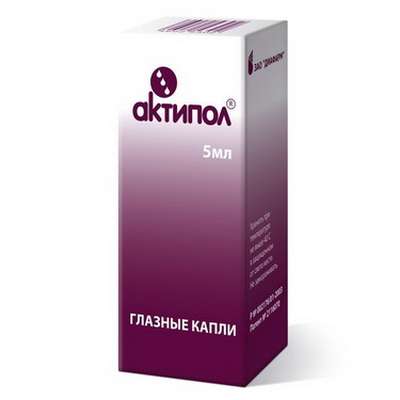Cymbalta (Duloxetine) pills - Instructions for Use, Dosage, Side Effects, Reviews
19 Mar 2017
Synonyms: Ambidext, Ariclaim, Cymbalta, CYMBALTA, Cymgen, Diliner, Dulane, Dulife, Dulomax, Dulot, Dulotrac, Dulox, Duloxen, Dumore, Duotop (Duloxetine and Mecobalamin), Dupact, Dureep, Dutin, Duxet, Sylonex, Symbal-M (Duloxetine and Mecobalamin), Sympta, Verlox, Yentreve, Ao Si Ping, Ariclaim, Cymbalta Lyfjaver, Cymbalta, CYMBALTA, Delok, Deloxi, Duceten, Duloxetine Boehringer, Duxetin, Lervitan, Nitexol, Xeristar, XERISTAR, Yentreve, YENTREVE.
Active substance: Duloxetine.
What is duloxetine?
Duloxetine is a selective serotonin and norepinephrine reuptake inhibitor antidepressant (SSNRI). Duloxetine affects chemicals in the brain that may be unbalanced in people with depression.
Duloxetine is used to treat major depressive disorder in adults. Duloxetine is also used to treat general anxiety disorder in adults and children who are at least 7 years old.
Duloxetine is also used in adults to treat fibromyalgia (a chronic pain disorder), or chronic muscle or joint pain (such as low back pain and osteoarthritis pain).
Duloxetine is also used to treat pain caused by nerve damage in adults with diabetes (diabetic neuropathy).
ATC - N06AX21 Duloxetine
Pharmacological group - Antidepressants.
Nosological classification (ICD–10)
F32 Depressive episode;
F33 Recurrent depressive disorder;
G63.2 Diabetic polyneuropathy (E10-E14 + with common fourth character.4).
Composition, structure and packing
Hard gelatin capsules, size #1 (#3), opaque, blue/white (opaque, blue/green), printed with green ink dosage “30 mg” (“60 mg”) and an identification code “9543” (“9542”); contents of capsules - pellets from white to grayish-white.
Excipients: sucrose, hypromellose, granulated sugar (not more than 92% of sucrose, starch), talc, hypromellose acetate succinate, triethyl citrate, a white colorant (titanium dioxide, hypromellose).
Cover structure: indigo, titanium dioxide, sodium lauryl sulfate, gelatin.
Pharmacological action
Antidepressant reuptake inhibitor of serotonin and norepinephrine (noradrenaline). Weakly inhibits dopamine uptake, do not have significant affinity for histamine, dopamine, and choline adrenoceptors. The mechanism of action of duloxetine is to suppress reuptake of serotonin and norepinephrine (noradrenaline), as a result of increased serotonergic and noradrenergic neurotransmission in the CNS.
Duloxetine has a central mechanism for the suppression of pain, which is primarily manifested by increased sensitivity to pain with neuropathic pain syndrome etiology.
Pharmacokinetics
Absorption
After oral administration duloxetine is well absorbed from the gastrointestinal tract, absorption begins at 2 h after administration, C max is achieved after 6 h after administration. Receiving both food increases the time to reach C max to 10 hours, which reduces the extent of absorption (approximately 11%), but no effect on the C max.
Distribution
Plasma protein binding is high (over 90%), mainly albumin and α 1-globulins. Violations by the liver or kidneys do not affect the protein binding.
Metabolism
Duloxetine actively biotransformed involving isoenzymes CYP2D6 and CYP1A2, which catalyze the formation of two major metabolites (4-glucuronate conjugate hydroDuloxetine sulphate conjugate of 5-hydroxy–6 methoxyDuloxetine). Circulating metabolites do not possess pharmacological activity.
Excretion
T 1/2 is 12 hours. Average clearance of duloxetine is 101 l/h. Excreted in the urine as metabolites.
Pharmacokinetics in special clinical situations
When conducting studies that find some differences between the pharmacokinetic processes in men and women (average clearance of duloxetine lower in women), but the need for dose adjustment based on gender is not.
When conducting studies that find some differences between the pharmacokinetic processes between patients of middle and old age (AUC and T 1/2 longer in the elderly), but need to adjust the dose depending only on the age of the patients is not.
In patients with end-stage renal disease on hemodialysis, the values of C max and AUC of duloxetine increased by 2 times. In this regard, should consider reducing the dose of the drug in patients with clinically severe renal impairment.
In patients with clinical signs of liver failure may slow the metabolism and excretion of duloxetine. After a single dose of duloxetine 20 mg in 6 patients with cirrhosis and mild hepatic impairment (class B Child-Pugh) duration T 1/2 duloxetine was approximately 15% higher than in healthy individuals of the corresponding sex and age with a five-fold increase in the average value of AUC. Despite the fact that the C max in patients with cirrhosis was the same as that of healthy people, T 1/2 approximately 3 times more.
Cymbalta (Duloxetine) Dosage
The drug is taken by mouth with or without food.
The recommended starting dose is 60 mg 1 time/day. If necessary, increase the daily dose to 60 mg 1 time/day to a maximum dose of 120 mg/day in 2 divided doses. A systematic evaluation of safety of the drug in a dose of 120 mg was not carried out.
In patients with chronic renal failure in end-stage (creatinine clearance <30 ml/min), the initial dose is 30 mg 1 time/day.
In patients with impaired liver function should reduce the initial dose of the drug or reduce dosing frequency.
Clinical experience with the drug in patients below the age of 18 years is not exist.
The capsules should be swallowed whole without chewing or crushing. You can not add the drug in food or mix it with liquids because This can damage the shell enteric pellets. It can be taken regardless of meals.
Cymbalta (Duloxetine) Overdose
Known cases of overdose in single-step ingestion of 2000 mg of duloxetine as one, and in combination with other drugs.
Symptoms (mainly in cases of co-overdose): serotonin syndrome, somnolence, vomiting, clonic convulsions. Extremely rare, and also in cases where the combined overdose reported lethal consequences.
Treatment: Advice on control of the cardiovascular system and other vital signs; if necessary, symptomatic and supportive therapy. In the case of serotonin syndrome may cyproheptadine treatment and application of the normalization of body temperature. No specific antidote.
Cymbalta (Duloxetine) Drug Interactions
The simultaneous use of duloxetine (60 mg 2 times/day) had no significant effect on the pharmacokinetics of theophylline -metabolizing CYP1A2. Clinically significant effect on the metabolism of duloxetine CYP1A2 substrates is unlikely.
At the same time taking the drug Cymbalta with potent inhibitors of CYP1A2 (eg, certain antibiotics, quinolone derivatives) may increase the concentration of duloxetine in blood plasma, as CYP1A2 is involved in the metabolism of duloxetine (such combinations should be used with caution, with duloxetine should be used in low doses). A potent inhibitor of CYP1A2 fluvoxamine (when receiving a dose of 100 mg 1 time/day) reduced the average plasma clearance of duloxetine by about 77%.
Duloxetine is a moderate inhibitor of CYP2D6, so while the use of duloxetine 60 mg 2 times/day desipramine AUC (substrate CYP2D6) increased 3-fold. With simultaneous use of duloxetine (40 mg 2 times/day), there was an increase of the AUC stable tolterodina (administered at a dose of 2 mg 2 times/day) by 71%, with the pharmacokinetics of 5-hydroxy metabolite has not changed. Caution should be used drug Cymbalta with drugs that are metabolized by CYP2D6 isoenzyme and have a narrow therapeutic index.
Simultaneous use of duloxetine potential CYP2D6 inhibitors may lead to increased concentrations of duloxetine in plasma. Paroxetine (using 20 mg 1 time/day) reduced the average clearance duloxetine about 37%. In the application of duloxetine with inhibitors CYP2D6 (eg, selective serotonin reuptake inhibitors) should be careful.
With simultaneous use of duloxetine and other drugs that affect the central nervous system and have a similar mechanism of action (including ethanol and etanolsoderzhaschie drugs) may mutual enhancement effects (such combination requires caution).
Duloxetine is largely bound to plasma proteins, therefore concurrent use with other drugs that are highly bound to plasma proteins, can lead to an increase in the concentration of free fractions of both drugs.
Pregnancy and lactation
Use of the drug during pregnancy is possible only in cases where the intended benefits to the mother outweighs the potential risk to the fetus, as clinical experience with duloxetine in pregnancy is not enough.
Women of childbearing age should be warned that in the event of or planning a pregnancy during the use of the drug Cymbalta they should report it to your doctor.
If necessary, use during lactation should decide on the termination of breastfeeding (due to lack of experience in the application).
Cymbalta (Duloxetine) Side effects
From CNS: ≥10% - dizziness (excluding vertigo), sleep disturbances (insomnia or drowsiness), headache (headache was observed less frequently than in patients receiving placebo); from ≥1% to <10% - tremor, weakness, lethargy, anxiety, yawning; ≤1% - agitation, disorientation.
From the digestive system: ≥10% - dry mouth, nausea, constipation; from ≥1% to <10% - diarrhea, vomiting, loss of appetite, weight loss, impaired liver laboratory tests, changes in taste; ≤1% - hepatitis, jaundice, increase in alkaline phosphatase, ALT, AST and bilirubin levels, belching, gastroenteritis, stomatitis.
On the part of the musculoskeletal system: from ≥1% to <10% - muscular tension and/or twitching; ≤1% - bruxism.
Cardio-vascular system: from ≥1% to <10% - heartbeat; ≤1% - orthostatic hypotension, syncope (especially at the beginning of therapy), tachycardia, increased blood pressure, cold extremities.
Part of the reproductive system: from ≥1% to <10% - anorgasmia, decreased libido, delayed and abnormal ejaculation, erectile dysfunction.
From the urinary system: from ≥1% to <10% - shortness urine-Emitting; ≤1% - nocturia.
From a metabolism: from ≥1% to <10% - weight loss, sweating, hot flashes, night sweats; ≤1% - hyponatremia, thirst, weight gain, dehydration.
From the senses: from ≥1% to <10% - blurred vision, changes in taste; ≤1% - glaucoma, glaucoma, mydriasis, blurred vision.
Allergic reactions: ≤1% - anaphylactic reactions, fever, angioedema, rash, Stevens-Johnson syndrome, urticaria.
Other: ≤1% - chills, malaise, feeling hot and/or cold, photosensitivity. To remove the drug, often experienced dizziness, nausea, headache. Patients with painful diabetic neuropathy, the form may be a slight increase in fasting blood glucose.
In clinical trials in patients with painful diabetic neuropathy form revealed the following data on the possible effect of duloxetine on the glucose concentration. Short-time admission (up to 12 weeks.), A slight increase in fasting blood glucose in the background to ensure a stable glycated hemoglobin levels. Against the background of long-term treatment (up to 52 weeks.) There was a slight increase in the level of glycated hemoglobin, which is a 0.3% increase exceeded the corresponding figure in patients receiving other treatments; also observed a slight increase in fasting glucose and total cholesterol in the blood.
Post-marketing reports
Endocrine system: <0.01% - inappropriate secretion of ADH.
CNS: <0.01% - extrapyramidal syndrome, serotonin syndrome; 0.01% –0.1% - hallucinations.
Urinary system: 0.01% –0.1% - urinary retention.
Indications
Depression;
Painful form of diabetic neuropathy;
Generalized anxiety disorder.
Contraindications
Simultaneous use of MAO inhibitors;
Uncorrected angle-closure glaucoma;
Hypersensitivity to the drug.
With careful use of an exacerbation of mania/hypomania, seizures, mydriasis, violations of liver or kidney problems, if the probability of suicide attempts.
Cautions
In the appointment of serotonin reuptake inhibitors in combination with MAO inhibitors have been cases of severe reactions, sometimes with fatal outcome (hyperthermia, rigidity, myoclonus, various violations to abrupt fluctuations in vital signs and mental status changes, including marked agitation with the transition to delirium and to whom). Such reactions are also possible in cases where the serotonin reuptake inhibitor was canceled shortly before the appointment of MAO inhibitors. In some cases, symptoms characteristic for CSN.
Effects of combined use of duloxetine and MAO inhibitors have not been evaluated either in humans or animals. The use of Cymbalta concurrently with MAO inhibitors or in the period up to 14 days after their withdrawal is not recommended because Duloxetine is a serotonin reuptake inhibitor and norepinephrine (noradrenaline). Based on the duration T 1/2 duloxetine MAO inhibitors should not be administered for at least 5 days after discontinuation of duloxetine.
As with other drugs that have similar effects on the central nervous system, Cymbalta should be used with caution in patients with a history of manic episodes, as well as a history of seizures.
Depressive states are accompanied by a high risk of suicidal thinking and behavior. Because of this, patients with a diagnosis of depression, taking duloxetine should inform the doctor about any disturbing thoughts and feelings.
Against the background of the drug may develop mydriasis, so caution should be exercised in the appointment of duloxetine in patients with elevated intraocular pressure or in those at risk of acute angle-closure glaucoma.
In patients with severe renal impairment (creatinine clearance <30 mL/min) or severe hepatic insufficiency observed increase in the concentration of duloxetine in the plasma. If these patients receiving duloxetine clinically substantiated, the drug should be used in lower initial doses.
In patients with hypertension and/or other diseases of the cardiovascular system is recommended to carry out monitoring of blood pressure.
Caution should be used on patients with chronic alcoholism.
Effects on ability to drive vehicles and management mechanisms
In patients taking Cymbalta may develop sedation and drowsiness, so the period of treatment, patients should exercise caution when driving and other potentially hazardous activities. Renal impairment
In patients with chronic renal failure in end-stage (creatinine clearance <30 ml/min), the initial dose is 30 mg 1 time/day.
Cymbalta (Duloxetine) Reviews
For me Cymbalta generated restoring good night's sleep (4-6 hours of torment to full 8), has become calmer and there is no disturbing thoughts, which is very important for me, was the joyful attitude towards life. But...! I Cymbalta has caused the following side effects began to lose weight, small headaches and, worst of all, I had anorgasmia. Who knows is not lack of orgasm. This is usually the case with those men who had too much alcohol, or as a side effect in medications. I found that when Cymbalta trials this effect was seen in only 4% of the subjects. But the fact is that many people are depressed sex does not happen for a very long time, as well as the sperm accumulates all the time, and out during sex and it must therefore, it is possible that some patients do not notice the difference. I have also another terperament - I need sex every day at least. Normally, sex lasts from 30 minutes to 45 minutes, and now the time has increased to 1.5 hours, but it is very difficult for me and for my wife, all the more so for me it is now usually ends with exhaustion without orgasm.

 Cart
Cart





